A crozier is a distinctive element of the bishops. It is a staff given to them at their consecration to be carried, together with the miter, as a sign of their pastoral function.

Croziers have been traditionally made -we already find them in the 11th century- in different materials: gold, silver, bronze, ivory... worked with exquisite care and later enriched, giving rise to true works of art. The work on these pieces gives rise, however, to a problem: The richer the piece becomes, the heavier it becomes, which can be a major obstacle, since they are to be carried by hand by the bishop in liturgical ceremonies. This project, commissioned from Latin America, was conceived from the beginning as a challenge against weight, without affecting the beauty or consistency of the piece.
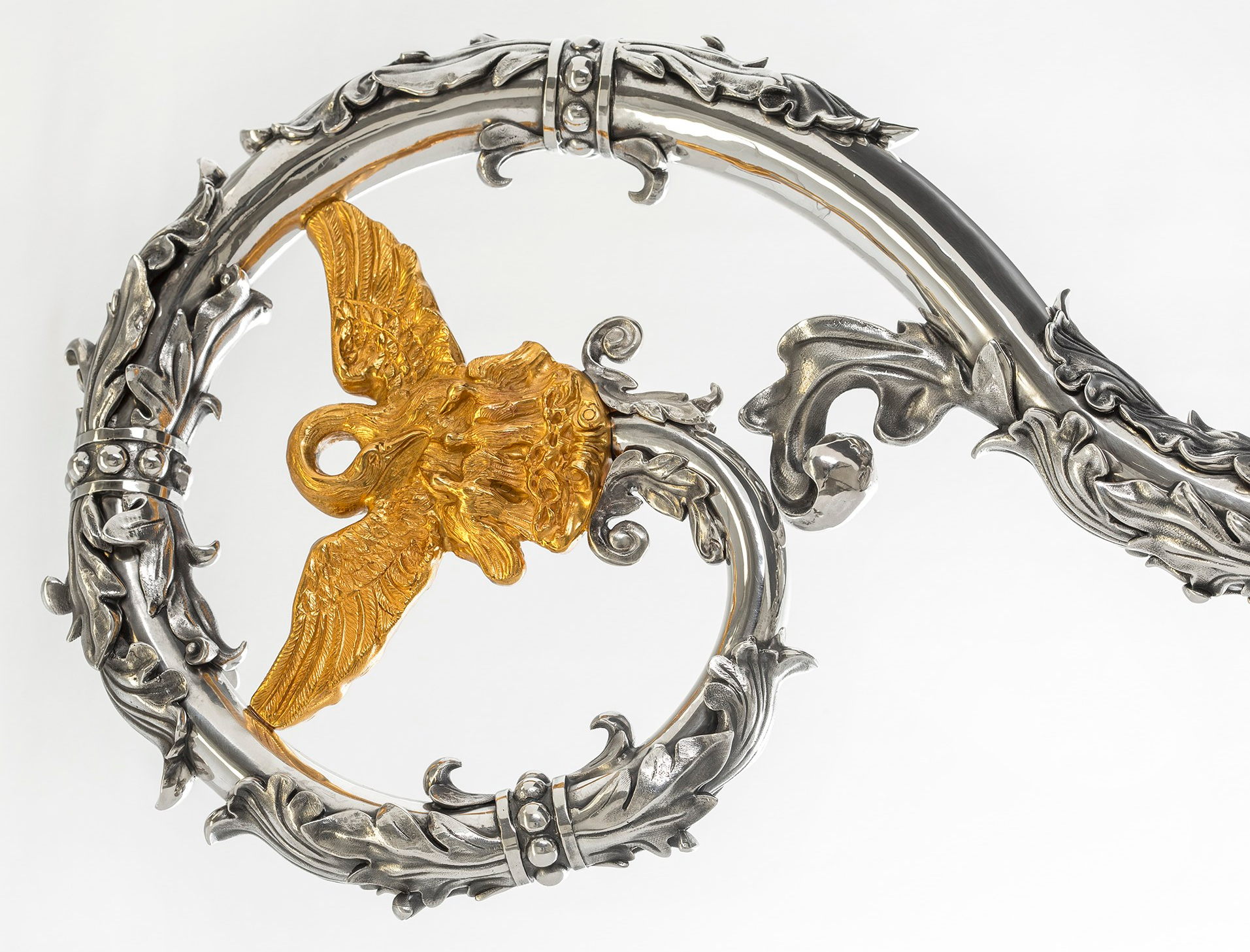
The first important decision when approaching the piece is its mode of realization; a very rare technique has been chosen today due to its complexity: hammer and chisel forging. This would lighten the weight of the crosier by at least 4 kg, leaving the metal completely hollow inside. A total of 3,200 grams of silver have been used in this meticulous work that has involved about 85 hours of assembly work and 80 hours of chiseling in the workshop.
The staff consists of two main parts: the staff and the club or volute.
For the realization of the rod A 30 mm diameter silver plate was used, which, once rounded on the lathe, was filled with fish to avoid deformation during chiseling.
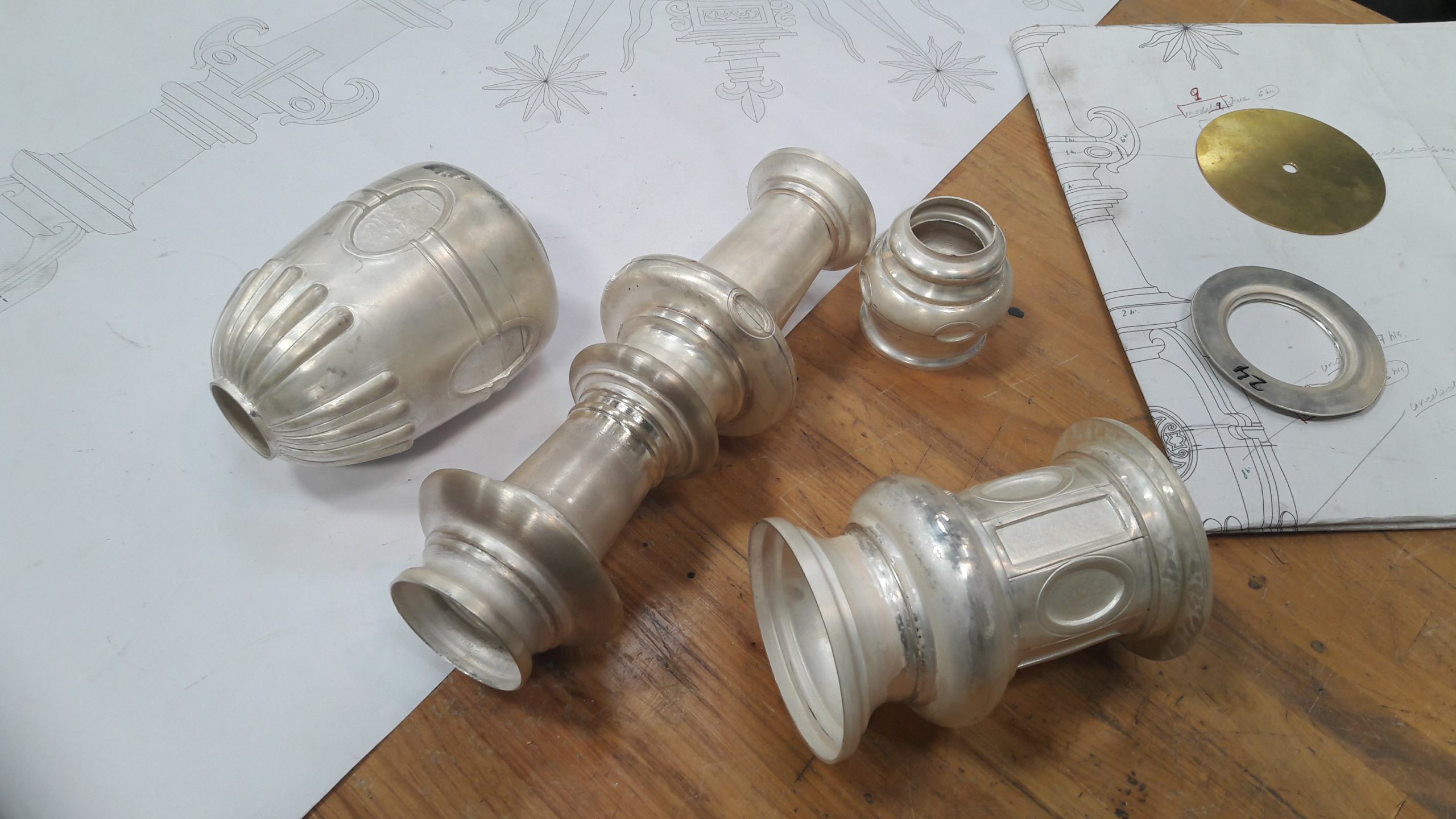 Deformations are more likely to occur the tighter the material, which in this case was only 2 mm thick. The chiseled ornamentation on the rod was a detailed work, a slow process that required extracting the volumes little by little from the smooth metal.
Deformations are more likely to occur the tighter the material, which in this case was only 2 mm thick. The chiseled ornamentation on the rod was a detailed work, a slow process that required extracting the volumes little by little from the smooth metal.
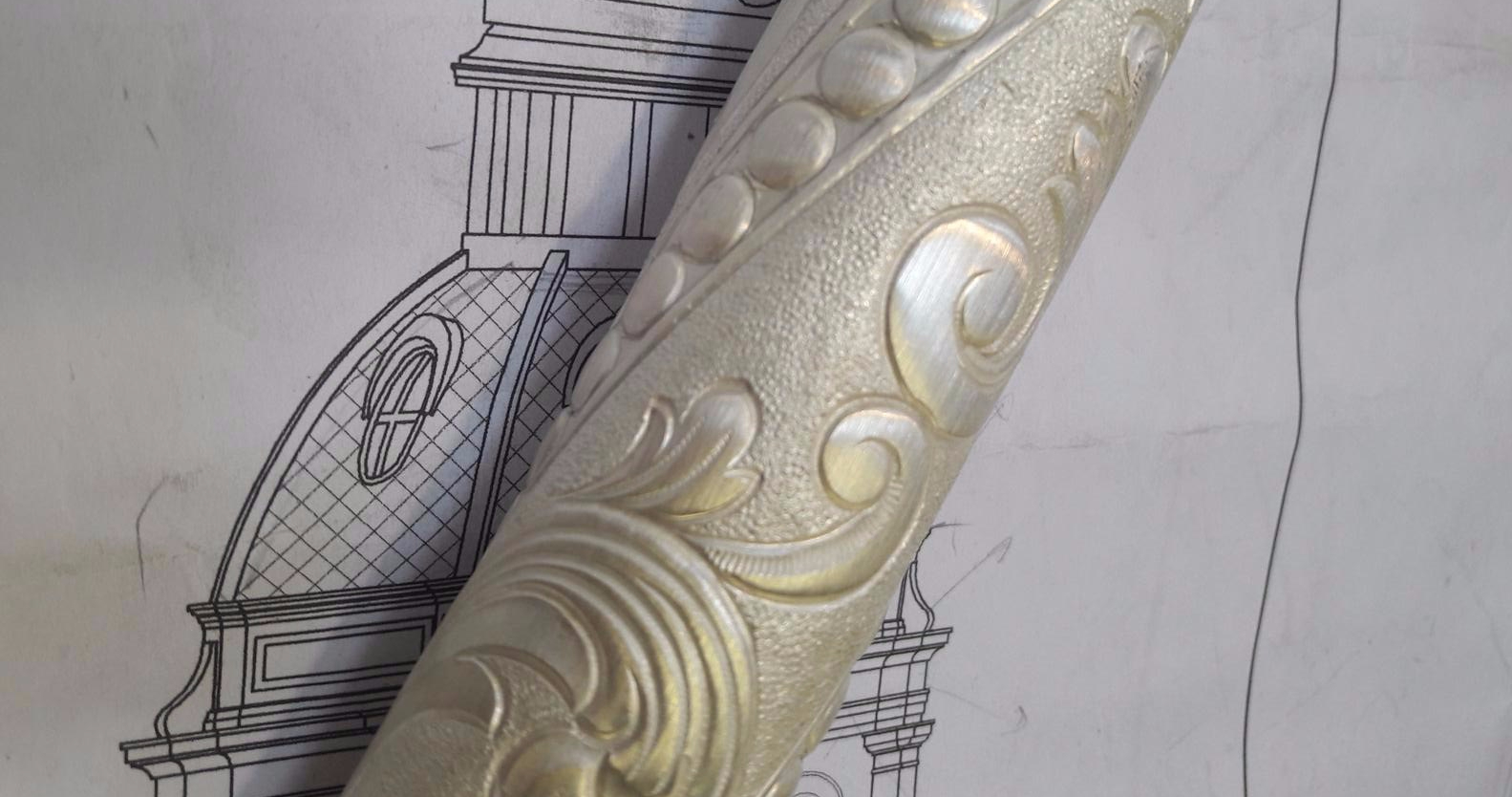
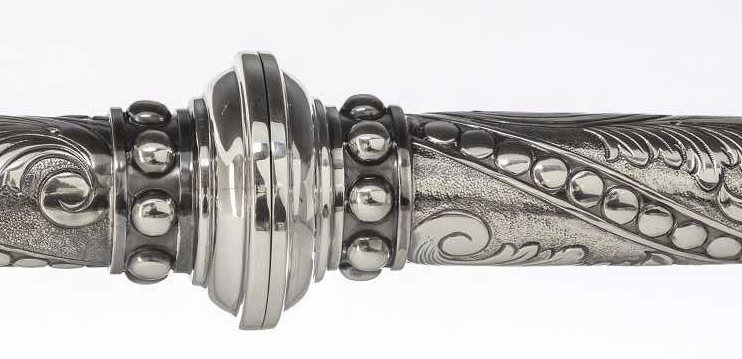
Each rod fragment is linked to the next by means of the following nudetessmall circular pieces made on the notching lathe which in turn function as an ornamental element. In the upper part of the rod, before the volute, there is a macoya made from octagonal pieces and a dome simulating St. Peter's Basilica. Under its colonnade we find several figures of saints that were first made of brass and later reproduced and cast in silver.
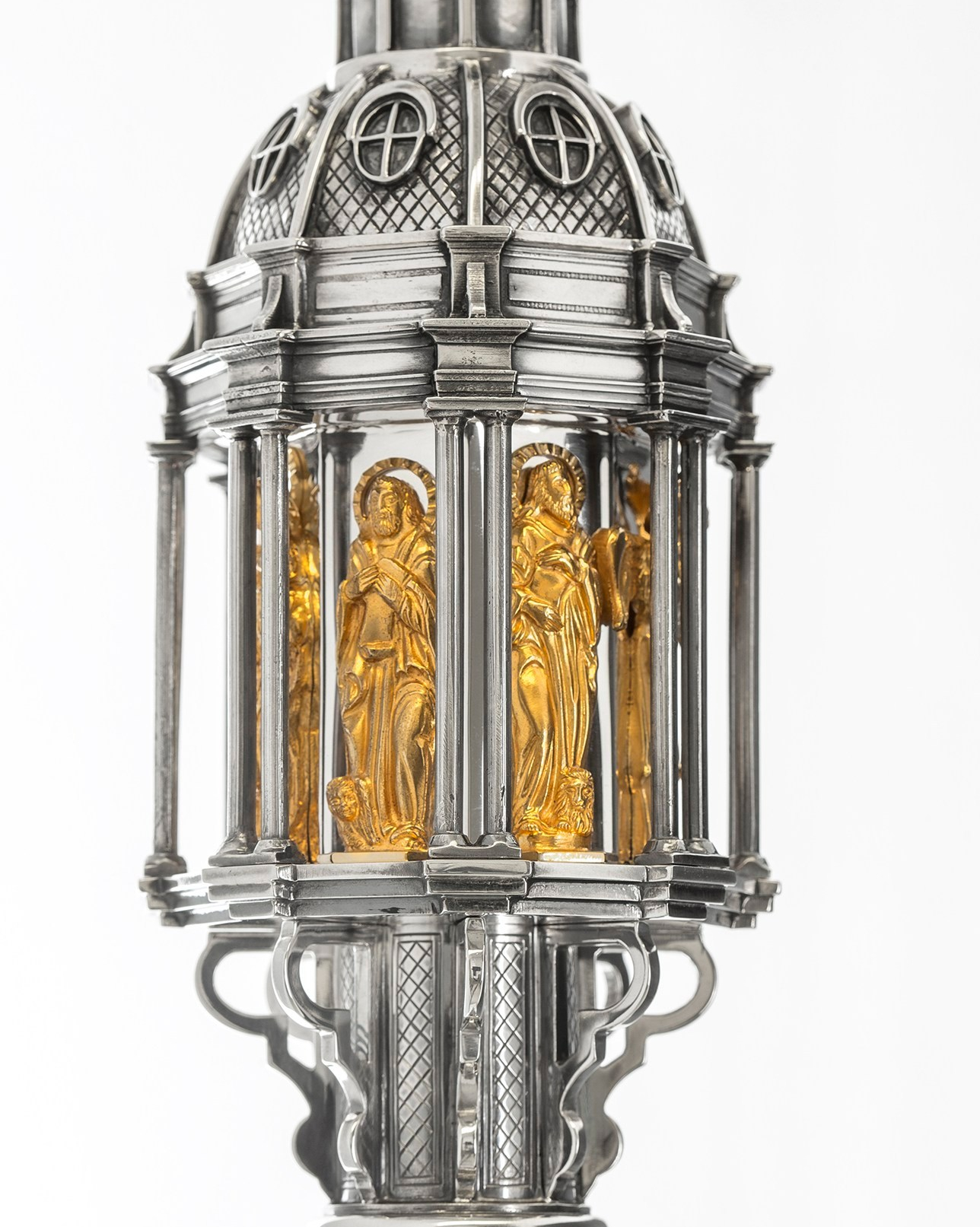
The club was made using the hammer forming technique. It is also hollow, which saves almost 3 kg compared to a solid one. Its ornamentation, however, is not chiseled but added: appliqués of floral motifs were made in silver. in order to integrate them into the piece and thus give it movement and life. The designs were materialized in castable resin and were then transferred to silver with the lost wax technique.
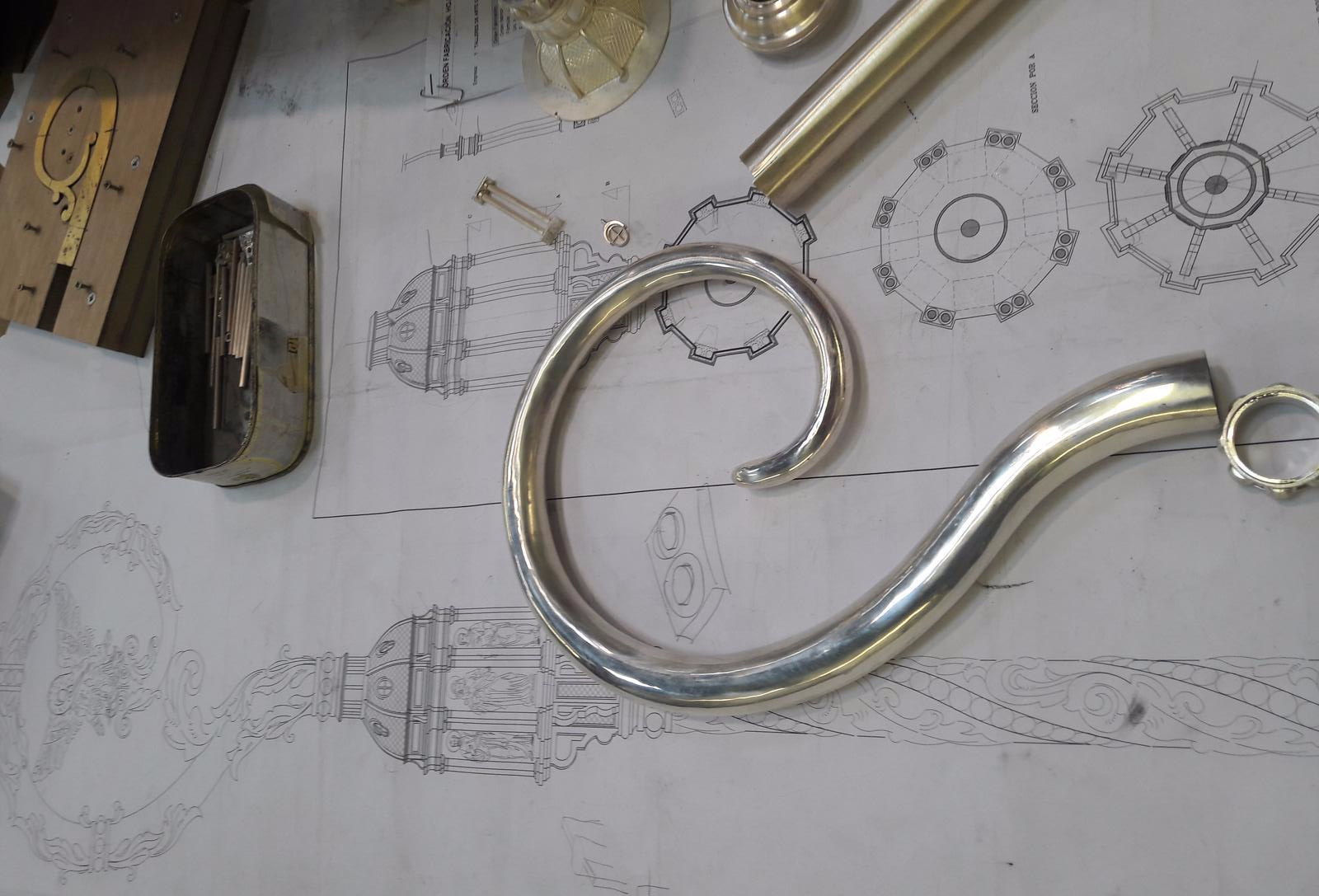
The center of the scroll is always the most decorated part of the crosier, already in the 12th century we find emblematic or iconistic figures on the crosiers. In this case the pelican has been chosen. The pelican is an animal widely used in Christian iconography as a symbol of Jesus Christ; it was believed that this animal wounded itself to feed its young with its own flesh and blood when there was a lack of food. This piece was first made in electroplate and then reproduced in silver and gilded by an electrolytic process.
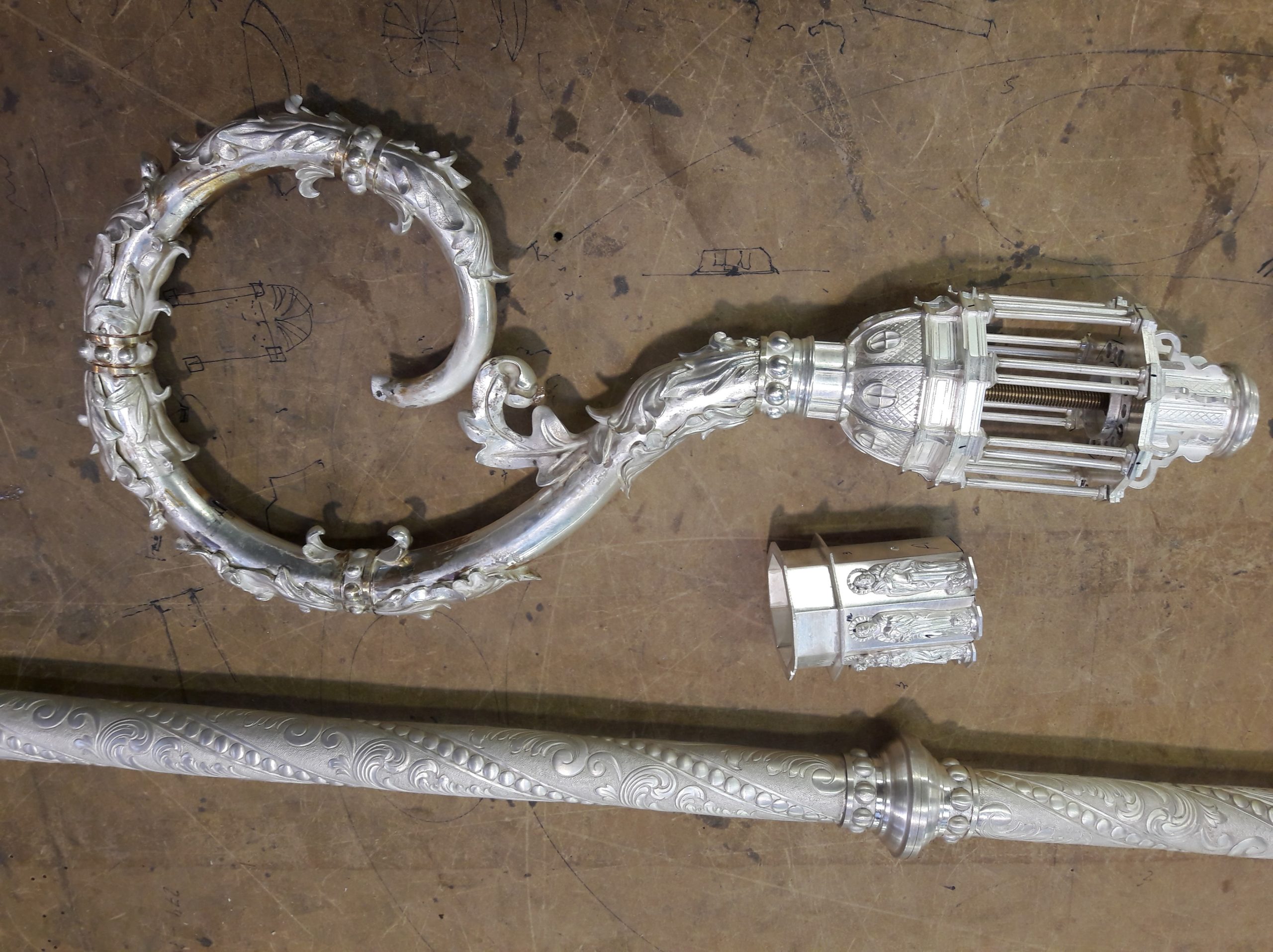

Once the pieces have been notched, chiseled and assembled, they will receive the finish. This process begins by equalizing the polishing line of the piece and polishing. In order to embellish the silver and increase the contrasts of the decoration, an unusual technique is used, consisting of the application of sulfur to darken the silver and increase the shades and the application of carbon black to enhance the brightness of the metal. It concludes with a cleaning with cotton wool that relegates the oxide to the grooves and highlights the silver highlights. This whole process greatly embellishes the piece and gives it a high-contrast finish.

